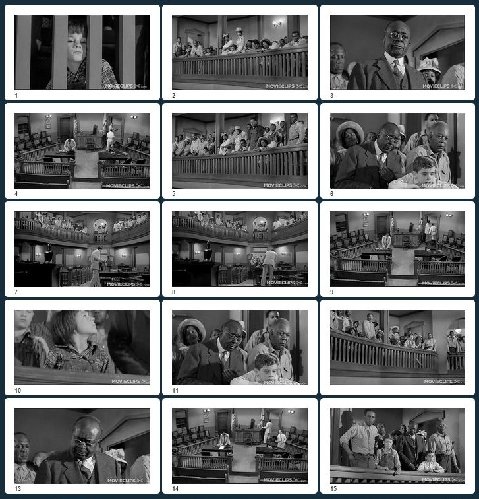What is editing, as it applies to film?
In its simplest form, editing (of film/video) involves putting shots or scenes in a logical order. Most movies are not shot in chronological order, so an editor is employed, working closely with the director, to create the finished film.
When most of us view a film, we’re not always aware of editing. But the way a film is edited can have an effect on the audience.
For example, a scene of cars racing may use very quick, short edits, or cuts, which can make a scene chaotic or frenzied. To learn more about fast-cutting, go here.
To Kill A Mockingbird
I previously authored this “film study guide” to the classic 1962 Universal release. Among other things, the guide also includes a section on editing which you, the teacher, might wish to review, prior to this exercise.
Introduction to the exercise
I previously authored this lesson plan which focuses on the closing trial scene of the film. (The lesson plan challenges the student to be the director and to consider where to place cameras in the courtroom that would be tasked with capturing all of the shots. It also asks students to storyboard, to draw, the camera shots that each camera would capture.)
In this scene, Atticus, having lost the case, is packing up his briefcase as the camera focuses on the blacks who have been relegated to the balcony, along with Reverend Sikes and Scout, Jem and Dill.
The scene is punctuated with somber music. Each shot in the scene might also be considered a different character’s point-of-view. Have students read the scene as it appears both in the book and as it appears in the screenplay. (Both can be found here.)
Procedures
First, ask students to close their eyes as they listen to the scene as it plays out in the film. You can find the scene, labeled “Your Father’s Passing,” here. If you wish you can task some students with timing the scene. (it runs about one minute)
Students will go to this web site where they will find 15 separate shots from this scene. The shots are numbered and placed deliberately out-of-order.

It will be the students’ job to click and drag each shot placing them in the correct chronological numbered order.
Students should explain why they placed each shot where they did. You might also engage them with the question: whose point-of-view does that shot represent?
Lastly, play the scene, found here, so that students can see it and compare their “editing” of the scene to how it was accomplished in the film.
Share This Page:



